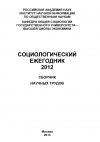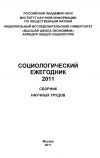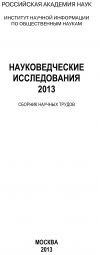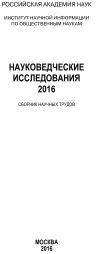Текст книги "Социологический ежегодник 2013-2014"

Автор книги: Коллектив авторов
Жанр: Социология, Наука и Образование
сообщить о неприемлемом содержимом
Текущая страница: 13 (всего у книги 35 страниц)
III. Исследования социальной солидарности, морали и альтруизма
С татьи
В поисках «Реальной утопии»: Определение границ поля исследований альтруизма, морали и социальной солидарностиВ. Джеффрис
V. Jeffries
In search of a «real utopia»: Formulating the field of altruism, morality and social solidarity
In the early history of sociology altruism, morality and social solidarity were important topics of study. In fact, the case can be made that they are among the most significant components of the sociological universe. However, despite their obvious centrality, interest shifted away from their systematic study in the sociology of the last half of the 20th century [Alexander, 2011; Fein, 1977, p. 205; Hitlin, Vaisey, 2010, p. 3–14]. Recent major works [Alexander, 2006; Hitlin, Vaisey, 2010; Oliner, 2011] signal a reawakening of interest in these phenomena.
Within the American Sociological Association, a section devoted to the study of altruism, morality and social solidarity has been formalized. While this is a beginning, the establishment of these topics as a recognized and flourishing sociological field is a project in its formative stages. The nature of these phenomena needs to be described and elaborated. The recognition that they are related and interdependent is central to this task. Bringing these phenomena together to define the substantive interests of a coherent field of study provides an important basis for its growth. This article suggests some of the issues involved in such an effort and some of the possible avenues of its realization.
Formulating a «real utopia»
The theme of the 2012 American Sociological Association meetings was «Real utopias». Because this theme represents a model of sociological practice, it is relevant to formulating directions for the development of the field of altruism, morality and social solidarity. Erik Wright’s [Wright, 2010] real utopia model entails three basic components: the identification of the pathological that harms people, the exploration of preferable conditions and the formulation of strategies and tactics to move toward realizing them. These preferable conditions are «real» utopias because they are not ideal states that cannot be reached, but rather are explicitly formulated to be within the realm of possibility.
The model expresses the foundational assumption that sociology has a normative purpose. This is viewed as providing knowledge and understanding that can contribute to realizing a greater good than that of existing social and cultural conditions [Wright, 2010].
At a more abstract level, Helen Fein [Fein, 2007, p. VI] provides a similar perspective regarding the subject matter and creative direction of sociological practice. She maintains: «Basically, I view the sociological imagination as a lens to understand the social organization of good and evil. This quest implies that could we understand, we might transform the world».
The ideas of Wright and Fine provide foundational assumptions regarding the analytical and critical focus of the study of altruism, morality and social solidarity. One of these assumptions that guide future scholarly endeavors in this field is that all three of these phenomena can exhibit both good and evil forms and consequences.
The universe of sociology
The subject matter of sociology is defined by the concepts of culture, society, and personality [Toward a general theory of action, 1951, p. 6–8, 47–243; Sorokin, 1947, p. 63–64]. This frame of reference identifies, prioritizes, and orders the reality to be studied. Each of these foundational concepts designates aspects of reality that include numerous, varied and distinct phenomena.
This reality can analytically be viewed as containing two intersecting continuums. One is that phenomena range on a continuum from micro to macro. The other continuum focuses on the fact that the nature of these phenomena can range from objective to subjective, with most being a combination of both forms. Within this analytical framework, structures and processes can be studied from two perspectives. One is how macro influences micro, as how given institutions influence individual attitudes. The second is from micro to macro, as in how individual actions influence macro processes and structures [Ritzer, 1975].
A fully comprehensive approach to the study of altruism, morality and social solidarity would therefore include the analysis of these phenomena in their cultural, social and personality manifestations, at micro, meso and macro levels of analysis, and with respect to both of the aforementioned directions of influence. It would inevitably involve numerous studies by different investigators. This general perspective and organizational scheme of the subject matter designates a great number of different phenomena. Therefore, ideas of the good and of evil will also be varied.
Studying the good, and evil also
According to Wright’s model, a major goal of sociological practice is to strive for knowledge and understanding of the good. This can be approached analytically in terms of the envisioning of «real utopias», and the means of their greater realization. Therefore, the primary focus of theory and research should be on studying the nature and forms of the good and its personal, social and cultural manifestations. Phenomena that are negative and harmful must also be studied. The investigation of both types of such phenomena is directed toward practical and policy outcomes.
Sociology has tended to focus on social problems and pathologies. A shift in emphasis toward the investigation of positive phenomena would contribute to a more comprehensive scope in the content of sociological studies. It would provide important new vistas of theoretical and research endeavor, with the potential of providing knowledge and understanding that could be of great social benefit to all of humanity [Sorokin, 2002, p. 473–480].
To formulate conceptions of real utopias, both specific and abstract ideas of good and evil are necessary. Such ideas need to be carefully formulated, elaborated and justified. They can then be applied as value premises that guide various aspects of scientific practice [Myrdal, 1958]. In the holistic model of four forms of sociological practice developed by Michael Burawoy [Burawoy, 2005], the nature of good and evil are central questions of critical sociology. The critical form of practice is not only the «conscience of society» in identifying evil; it also supplies «moral visions» of the good [Burawoy, 2005, p. 15–16]. Formulating these notions requires a continual process of dialogue among sociologists.
Goodness is one of the supreme values of traditional philosophies, the other two being truth and beauty [Sorokin, 1957]. At an abstract level, «goodness» can be viewed as the perfection of the beneficial properties of the essential nature of a given entity. The highest level of goodness is therefore the greatest possible actualization of all positive potentials [Aquinas, 1981, p. 663; Aquinas, 1993, p. 4, 41]. The qualities of goodness inevitably vary according to the nature and potentials of specific entities. Personal, social and cultural goodness thus differ according to variations in these phenomena.
Goodness of the human person has traditionally been identified with the cardinal virtues of temperance, fortitude, justice and prudence [Pieper, 1966]. At a more general level Sorokin [Sorokin, 2002, p. 6] characterizes the essence of goodness as love that is altruistic in nature. In a similar way Oliner [Oliner, 2011, p. 129–161] defines goodness in general as caring for others in the altruistic sense. The action is not dependent on any reward. Such goodness can be manifested in a variety of forms such as forgiveness, gratitude, apology, heroism, volunteering and benefiting oppressed groups. Wright identifies goodness as justice in two forms, social and political [Wright, 2010]. The first entails the availability of the means for human flourishing, the latter access to the means to participate in decisions affecting one’s life. These goods of justice are dependent on the characteristics of social structure and institutions.
Evil can be viewed as the absence of good [Aquinas, 1981]. In religious thinking and classical philosophy evil at the level of personality has been described in terms of the vices. These are greed, pride, envy, anger, lust, gluttony and sloth [Schimmel, 1992]. Wright identifies what is here called evil as «the specific properties of structures and institutions» that harm people [Wright, 2010, p. 11]. In a somewhat similar vein, Oliner views evil in the most general sense as «an act that has negative moral consequences, which causes pain, injury or trouble to others» [Oliner, 2011, p. XII]. On the social level it involves «the creation of conditions that materially or psychologically diminish a people’ dignity, livelihood, happiness and the capacity to fulfill basic material needs» [Oliner, 2011, p. 4].
Applying the «real utopia» model to the subject matter
Wright’s model of the practice of sociology is focused on movement from evil to good. A condition that harms people in some way is identified and analyzed. Endeavors are then focused on envisioning a preferable condition and on the means to reach it. It is important to recognize that altruism, morality and social solidarity each exhibit this two-sided nature of good and evil.
Altruism. There is general agreement in the research and scholarly literature that altruism involves doing good to, or benefiting, another. Both motive and behavior are generally included in this conception of altruism [Jeffries, 1998]. Altruism is usually used to refer to the attributes and actions of individual persons.
This view of the essence of altruism is comparable to the classic philosophical idea of benevolent love. This love is characteristic of true friendship. One wishes the other well for their own sake and seeks to realize the end of the other’s good through the means of appropriate behavior [Aquinas, 1981, p. 1263; Aristotle, 1941, p. 1058–1102].
There is also general agreement that altruism can range from low to high [Jeffries, 1998]. For example, Krebs and Van Hesteren posit seven levels of altruism, ranging from a low point of egocentric accommodation to a high point of universal love that is developed in all its aspects [Krebs, van Hesteren, 1992]. Sorokin’s scheme of the five dimensions of altruistic love identifies aspects of the variation of love from low to high. These dimensions are: intensity, the degree of effort and energy; extensity, the number and range of those given love; duration, the time period of love; purity, the degree to which love is centered on the other rather than self-gratification; and adequacy, the degree to which both subjective intent and objective consequences benefit the other [Sorokin, 2002, p. 15–35].
While the intent of altruism is to benefit another, the consequences may be negative. A recent volume [Pathological altruism, 2011] focuses on this «pathological» variant of altruism, identifying and exploring its various manifestations. Its essential characteristic is that motivation and behavior intended to benefit the other has «substantial negative consequences to the other or even to the self». The individual «sincerely» behaves in what he or she believes to be an altruistic manner, yet harms the person or group intended to be helped [Oakley, Knafo, McGrath, 2011, p. 4].
Social solidarity. The concept of social solidarity refers to a form of interaction. In solidary interaction the meanings, values and behaviors of the interacting parties concur and are therefore helpful in realizing shared objectives [Sorokin, 1947, p. 93–131]. Solidarity also entails a sense of unity and integration with others in the group [Alexander, 1988, p. 78; Sorokin, 1947, p. 99–102]. Solidary interaction can occur between individuals and between groups in intergroup relations. Its locus ranges from micro to meso to macro levels. In this sense it generally refers to group characteristics and processes.
Various theorists have recognized that social solidarity can produce consequences that can vary dramatically on the range from good to evil. For example, Sorokin maintains that altruism that is restricted to one group, whether it be a family, class, religion, ethnic group or nation, has a tendency to generate out-group antagonisms. The greater the intensity and exclusivity of this in-group solidarity, the more likely there will be indifference or aggressiveness toward outsiders. Restricted in-group altruism generates egoism toward out-groups. Solidarities that are «exclusive tribal solidarities» [Sorokin, 2002, p. 461] have produced intergroup antagonisms and warfare throughout history. Unselfish love needs to be made available to all of humanity in a «universal solidarity» in which altruism is extended beyond particular groups and eventually includes all of humanity [ibid., p. 461–464].
Alexander has also recognized the two-sided nature of solidarity. Numerous historical examples can be given of in-group solidarity accompanied by out-group exclusion and hostility [Alexander, 2011, p. 10]. A «universalizing social solidarity» is one that «can, in principle, include as full members every group and individual composing it» [Alexander, 2006, p. 44; Alexander, 1991]. This form of solidarity entails a mutual identification and sense of bonding that transcends particularistic affiliations such as race, ethnicity, class or religion.
Morality. Morality pertains to ideas about right and wrong and good and evil [Hitlin, Vaisey, 2010, p. 5–6]. Such ideas are a part of individual personalities and are also an important component of the cultures of groups of all types.
Morality also has a two-sided nature. It contains conceptions of both good and evil [Alexander, 2006]. Moral codes can involve «horrific particularism, an insiders’ morality that allows and even compels people to act immorally to those outside the restricted circle of the we» [Alexander, 2011, p. 9]. What is considered «good» in a given moral code can be at extreme variance from ideas such as caring or universal solidarity. For example, the Nazi moral code affirmed genocide against the Jewish people. Thus Adolf Eichmann stated: «The death of five million Jews on my conscience gives me extraordinary satisfaction» [quoted in: Oliner, 2011, p. XIV]. The rigid moral code of the Nazi SS defined «hard-heartedness» as a primary virtue. This SS ideal included personal honesty, overcoming feelings of compassion for others and a sense of being permanently at war [Ferrara, 2001, p. 175–178].
Fein has considered the importance of the moral component of culture in relation to life integrity rights. The range of inclusion in solidarity is an important factor in the violation of these rights, which include rights relating to life, personal inviolability and personal freedoms of various sorts. All societies have a «universe of obligation» that defines what groups belong, are the object of duties and are to be given protection and taken into account. This «circle of trust» defines the «operative boundary» of the «injunction not to do unto others what you do not desire they do unto you» [Fein, 1977, p. 204]. This circle of trust may be limited to particular groups, or it may be extended to all of humanity. When this moral universe is exclusive, moral obligations regarded as universal are rendered only to in-group members [ibid., p. 203–212]. Victims of the violation of life integrity rights are usually those excluded from the universe of obligation [Fein, 2007, p. 1–14].
Formulating a theoretical and research agenda
Wendell Bell [Bell, 2009, p. 95–96] has proposed a sociology of the good and a series of recommendations for its development [Bell, 1996]. Alexander maintains sociology needs to develop a model of both good and evil on the social level [Alexander, 2001, p. 161]. Wright’s model adds to this vision by further specifying the integration of a normative framework with the study of both the pathological and the preferable alternative [Wright, 2010]. Several areas of theoretical development and research that involve altruism, morality and social solidarity and their interconnections can be developed within this general perspective.
The relationship between the moral principles and ethical systems of culture and solidarity and antagonism, in both patterns of interaction and intergroup relations, needs to be investigated in detail. An important dimension of these cultural systems is the criteria for inclusion and exclusion and their supporting rationale. An example of this kind of research is Glock and Starks’s statistical analysis of religious beliefs and anti-Semitism [Glock, Starks, 1966]. The religious beliefs that contribute to anti-Semitism are explicitly identified and proposals for breaking the link between religious beliefs and anti-Semitism are given. A cultural typology of civil and uncivil solidarities that specifies the meaningful content of differing moral and ethical codes and their consequences in interpersonal and intergroup relations needs to be developed [Alexander, 2011]. The exact nature of universalizing moral systems needs to be specified. The effectiveness of different moral systems in socializing altruism in individuals is a related area of investigation. Sorokin’s pioneering study of altruistic growth and transformation provides a foundation for further research in this area [Sorokin, 2002].
The direction of influence from macro to micro provides the context for a variety of potential investigations. One area is the influence of general cultural patterns and values upon variances in aspects of altruism, morality and social solidarity. For example, Bellah and his associates’ [Habits of the heart, 1985] description of the negative effects of the utilitarian and expressive forms of individualism and Sorokin’s [Sorokin, 1941] description of the problematic of sensate culture in general, and its ethical system in particular, have clear implications for future studies of all three of these phenomena. The influence of the distribution and exercise of power and authority is also important in understanding aspects of altruism, morality and social solidarity [Hitlin, Vaisey, 2010, p. 9–10; Sorokin, Lunden, 1959].
The role of different social institutions such as education, government, family and economy on altruism, morality and social solidarity is a vital area for further study. For example, Zimmerman’s [Zimmerman, 1947] historical account of family systems in Western civilization indicates the important role of family socialization in developing an ethical sense of responsibility and caring for others, and also in the degree to which this orientation is extended to groups outside the family. Wright has stressed the importance of economic systems in influencing concern for the welfare of others and the negative effects of capitalism on a sense of community [Wright, 2010, p. 79–81]. Finally, Durkheim has studied the development of education in France, and identified the components of morality to be taught in educational practice [Durkheim, 1961, 1977]. His analysis of moral education and its effects invites further study. The writings of each of these theorists provide fruitful ideas for further elaboration, testing, and validation regarding institutions and variances in aspects of altruism, morality, and social solidarity.
The direction of influence from micro to macro is another major focus of theory and research. Movement from harmful conditions toward the realization of ideals «will depend on human agency, on the creative willingness of people to participate in making a better world» [Wright, 2010, p. 370]. The process through which an altruistic and moral orientation is developed is foundational. Though factors external to the individual may enhance or impede this process, «effortful thinking, meditation, volition and self-analysis» on the part of the individual is a necessary condition [Sorokin, 2002, p. 332]. At the most micro level of individual thought and behavior, more needs to be known about this process, particularly in a life history context. Sorokin has maintained the importance of moving toward social and cultural reconstruction by beginning with individuals, then moving systematically to meso, then macro, levels of reconstruction [Sorokin, 1948; Sorokin, 2002, p. 461–464]. How the actions of individuals can effectively create greater altruism, an inclusive morality and a sense of universalistic solidarity in increasingly larger social collectives needs to be better understood. Likewise, how meso level collectives such as organizations can influence macro levels such as institutions is a major area of theoretical and research development. This movement from smaller to larger groups and their cultures also provides a framework for future research regarding the formulation of effective strategies and policies of reconstruction at different levels [Wright, 2010, p. 370–371].
Conclusion
Fields of scholarly practice need a broad core of theoretical and research problems to provide for replication, elaboration and generalization. This concerted focus is necessary for producing knowledge and understanding what can contribute to the general social welfare. It is also necessary to create a coherent field of study that can form the basis for the development of a self-conscious and dedicated scientific community. This article is intended to provide a point of discussion and criticism for the necessarily collective effort to define and build the field of altruism, morality and social solidarity. In this sense it opens the door to collective efforts to construct a «real utopia» of scientific endeavor.
References
1. Alexander J.C. Action and its environments. – N.Y.: Columbia univ. press, 1988. – XII, 342 p.
2. Alexander J.C. Bringing democracy back in: Universalistic solidarity and the civil sphere // Intellectuals and politics: Social theory in a changing world / Ed. by Ch.C. Lemert. – Newbury Park (CA): SAGE, 1991. – P. 157–176.
3. Alexander J.C. Morality as a cultural system: On solidarity civil and uncivil // Perspectives: Newsletter of the ASA Theory section. – Northridge (CA), 2011. – Vol. 33, N 2. – P. 1–2, 9–11.
4. Alexander J.C. Toward a sociology of evil: Getting beyond modernist common sense about the alternative to the «good» // Rethinking evil / Ed. by M.P. Lara. – Berkeley: Univ. of California press, 2001. – P. 153–172.
5. Alexander J.C. he civil sphere. – N.Y.; Oxford: Oxford univ. press, 2006. – XIX, 793 p.
6. Aquinas Th. Commentary on Aristotle’s Nicomachean ethics. – Notre Dame (IN): Dumb Ox books, 1993. – XIII, 686 p.
7. Aquinas Th. Summa theologica: In 5 vol. – Westminister (MD): Christian classics, 1981. – XIX, 3057 p.
8. Aristotle. The basic works of Aristotle. – N.Y.: Random House, 1941. – XXXIX, 1487 p.
9. Bell W. Public sociology and the future: The possible, the probable and the preferable // Handbook of public sociology / Ed. by V. Jeffries. – Lanham (MD): Rowman & Littlefield, 2009. – P. 89–105.
10. Bell W. The sociology of the future and the future of sociology // Sociological perspectives. – Los Angeles (CA), 1996. – Vol. 39, N 1. – P. 39–57.
11. Burawoy M. For public sociology // American sociological rev. – Los Angeles (CA), 2005. – Vol. 70, N 1. – P. 4–28.
12. Durkheim E. Moral education. – Glencoe (IL): Free press, 1961. – XII, 287 p.
13. Durkheim E. The evolution of educational thought. – L.: Routledge & Kegan Paul, 1977. – XXX, 354 p.
14. Fein H. Human rights and wrongs: Slavery, terror, genocide. – Boulder (CO): Paradigm publishers, 2007. – VIII, 280 p.
15. Fein H. Imperial crime and punishment. – Honolulu: Univ. press of Hawaii, 1977. – XVIII, 250 p.
16. Ferrera A. The evil that men do: A meditation on radical evil from a postmetaphysical point of view // Rethinking evil / Ed. by M.P. Lara. – Berkeley: Univ. of California press, 2001. – P. 173–188.
17. Glock C.Y., Stark R. Christian beliefs and anti-semitism. – N.Y.: Harper & Row, 1966. – XXI, 266 p.
18. Habits of the heart / Bellah R.N., Madsen R., Sullivan W.M., Swidler A., Tipton S.M. – Berkeley: Univ. of California press, 1985. – XIII, 355 p.
19. Hitlin S., Vaisey S. Handbook of the sociology of morality. – N.Y.: Springer, 2010. – XIII, 595 p.
20. Jeffries V. Virtue and the altruistic personality // Sociological perspectives. – Los Angeles (CA), 1998. – Vol. 41, N 1. – P. 151–166.
21. Krebs D.L., van Hesteren F. The development of altruistic personality // Embracing the other: Philosophical, psychological and historical perspectives on altruism / Ed. by P.M. Oliner, S.P. Oliner, L. Baron, L.A. Blum, D.L. Krebs, M.Z. Smolenska. – N.Y.: New York univ. press, 1992. – P. 142–169.
22. Myrdal G. Value in social theory. – N.Y.: Harper & bros, 1958. – XLVI, 269 p.
23. Oakley B., Knafo A., Mcgrath C. Pathological altruism: Introduction // Pathological altruism / Ed. by B. Oakley, A. Knafo, G. Madhavan, D.S. Wilson. – N.Y.: Oxford univ. press, 2011. – P. 3–9.
24. Oliner S.P. The nature of good and evil. – St. Paul (MN): Paragon House, 2011. – XVI, 266 p.
25. Pathological altruism / Ed. by B. Oakley, A. Knafo, G. Madhavan, D.S. Wilson. – N.Y.: Oxford univ. press, 2011. – XXVIII, 465 p.
26. Pieper J. The four cardinal virtues. – Notre Dame (IN): Univ. of Notre Dame press, 1966. – XIII, 206 p.
27. Ritzer G. Sociology: A multiple paradigm science. – Boston (MA): Allyn & Bacon, 1975. – VI, 234 p.
28. Schimmel S. The seven deadly sins: Jewish, Christian and classical reflections on human nature. – N.Y.: Free press, 1992. – 298 p.
29. Sorokin P.A. Integralism is my philosophy // This is my philosophy / Ed. by W. Burnett. – N.Y.: Harper & bros, 1957. – P. 179–189.
30. Sorokin P.A. Society, culture and personality. – N.Y.: Harper & bros, 1947. – XIV, 742 p.
31. Sorokin P.A. The crisis of our age. – N.Y.: E.P. Dutton, 1941. – 338 p.
32. Sorokin P.A. The reconstruction of humanity. – Boston (MA): Beacon press, 1948. – XII, 247 p.
33. Sorokin P.A. The ways and power of love. – Philadelphia (PA): Templeton foundation press, 2002. – XXVIII, 552 p.
34. Sorokin P.A., Lunden W.A. Power and morality. – Boston (MA): Extending Horizons, 1959. – 204 p.
35. Toward a general theory of action / Ed. by T. Parsons, E.A. Shils. – Cambridge (MA): Harvard univ. press, 1951. – XI, 506 p.
36. Wright E.O. Envisioning real utopias. – N.Y.: Verso, 2010. – XVIII, 394 p.
37. Zimmerman C.C. Family and civilization. – N.Y.: Harper & bros, 1947. – X, 829 p.
Правообладателям!
Это произведение, предположительно, находится в статусе 'public domain'. Если это не так и размещение материала нарушает чьи-либо права, то сообщите нам об этом.








































